|
|
|
|
|
Hiroshima Art Project 08
|
|
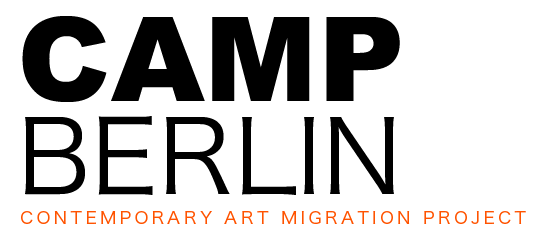 |
|
|
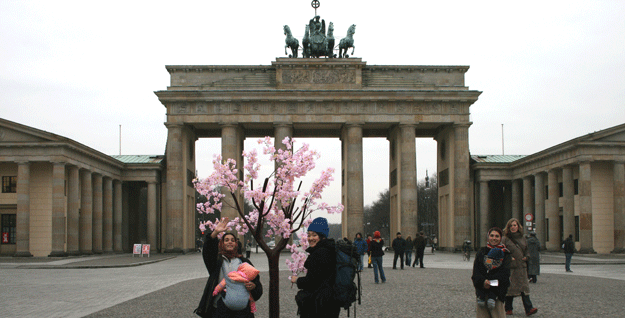 |
|
|
|
|
|
|
|
|
|
|
|
|
|
CAMP BERLIN
February 2 - 10, 2008 12:00-18:00
Ehemalige Zentralwerkstatt der BVG
(a former maintenance factory of Berlin Transportation Company)
Artistic Director Yukinori Yanagi
Artists
|
|
|
Thomas ADEBAHR, Andrea ZIMMERMANN, EMPFANGSHALLE
(Corbinian BOEHM + Michael GRUBER)
Erik ALBLAS + Irene PAEZUG
Edin BAJRIC
Marie Luise BIRKHOLZ
Megumi FUKUDA
Taro FURUKATA
Nicolas GRIMMER
Hir mi+Shige FUJISHIRO mi+Shige FUJISHIRO
Gillian HOLT
Saya IRIE
Yoshiaki KAIHATSU
Kanae KIMURA
Ofri LAPID
Paulina LEÓN
Silvia LORENZ
Silvia LORENZ+Aleksandar JESTROVIĆ or JAMESDIN
Shiro MASUYAMA
Shiho OKINAKA
Tatzu OOZU
David POLZIN
Sophia POMPÉRY
Saiko RYUSUI
Yoshihiko SHIKADA
Shitfun Factory
Chinami TAKAHASHI
Nozomi TOMOEDA
Shira WACHSMANN
Carolin WACHTER
Raul WALCH
Matthias WERMKE
Matthias WERMKE+Mischa LEINKAUF
|
|
|
|
Organizer
Executive Committee of Hiroshima Art Project
Co-organizer
Hiroshima City University
Kunsthochschule Berlin-Weissensee
Support



|
|
|
|
|
|
|
|
|
|
|
|
|
|
|
|
The exhibition CAMP BERLIN is the first part of a cultural exchange project between the Hiroshima City University (Faculty of Art) and the School of Art and Design Berlin-Weissensee (Department of Sculpture).
The exhibition will feature works by about 30 artists who study or graduated from these schools and live in Hiroshima or Berlin as well as works by invited artists who live and work globally.
Both Hiroshima City University and the School of Art and Design Berlin-Weissensee are part of a worldwide net providing students with opportunities to live and study abroad through their international student exchange programs. The main theme of the project migration - was constructed based on experiences that the participating artists from both schools have learned from studying and living in different cultures. Simultaneously, migration has been playing a major role in
society's formation of both Hiroshima and Berlin. Both cities has been "producing" and accepting large numbers of immigrants over different periods. While in the period before World War II for example, emigrants left Hiroshima to South American countries and Hawaii, nowadays the city is a home to a large number of resident immigrants from Korea and Brazil. The exhibition seeks to reflect contemporary experiences of artists acting across national borders within these
historical backgrounds.
The term "camp" might remind you nowadays of a joyful outdoor activity of camping as a temporary pause from daily routines. Contemporary art may have a similar power. But what if daily life is forced to be practiced in a camp like in Hiroshima, where camps were set up as rescue stations, shelters for orphans or isolation wards after the city was burnt out by the atomic bomb; or like in Europe's concentration camps; or like world wide, where immigrants spend sometimes years before being given a permission to enter a country can art limit itself to the function of a "pause from daily routines"?
CAMP BERLIN is directed by Professor Yukinori Yanagi with the curatorial support of the Division of Contemporary Art and Theory at Hiroshima City University in collaboration with Professor Eran Schaerf at the School of Art and Design Berlin-Weissensee. The second part of the project, CAMP HIROSHIMA is scheduled for November 2008 in Hiroshima.
|
|
|
|
|
|
|
|
|
|
|
|
|
Based on the theme of migration -- immigrants, emigration and movement, “CAMP BERLIN” was held in Berlin, Germany for ten days. As the exhibition venue, Ehemalige Zentralwerkstatt der BVG (a former maintenance factory of Berlin Transportation Company) was selected. This consisted of industrial remains like the site of the Former Naka Waste Incineration Plant Art Project 2007. Ehemalige Zentralwerkstatt der BVG was 58 meters long because cars or trams were repaired there. So we made white walls to divide the space. The walls allowed the multilayered theme to have a sequence and gave a sharp effect to the whole.
In that space, 31 artists presented their unique expressions about migration; some were invited artists who live and work globally and others were young artists mainly from Hiroshima City University and the School of Art and Design Berlin-Weissensee.
Both Hiroshima and Berlin have a deep relation with immigrants. Hiroshima produced large numbers of immigrants before World War II and Berlin has been accepting many Turkish immigrants and the likes. The theme “migration” implied such a background. Moreover, it reflected some historical or spatial aspects: structural change in societies, shortened travel hours due to new transportation technology, and virtual space created by innovative information technology. These changes in history and space have influenced societies, cultures, and especially contemporary art that expresses modern issues. Because we choose industrial remains relating to transportation as a venue and limited the length of the exhibition period to ten days, the exhibition achieved the diversity of expression which has developed since the late twentieth century.
A café called “Camp Kiosk” was set up in the center of the venue. Visitors could take a break and the artists carried out daily performances or events in that area. Thus, the space provided an opportunity for artists and visitors to interact through art. On the final day, a fusion dish of Okonomi-yaki (a popular food in Hiroshima) and Doener Kebab (a typical Turkish food that immigrants have spread in Berlin) was served to visitors. That art events were linked seamlessly around the caf? where people gathered and talked was one of the key characteristics of this project. |
|
|
|
|
|
|
|
|
|
|
|
|
Yukinori Yanagi
Division of Contemporary Art and Theory, Faculty of Art, Hiroshima City University
http://www.cat.art.hiroshima-cu.ac.jp/staff_folder/yanagiyukinori_e.html
Yukinori Yanagi
http://www.yanagistudio.net/home.html
inujima art project
http://www.inujima-ap.jp/
|
|
|
|
|
|
|
|
|
|
|
|
Executive Committee of Hiroshima Art Project CAMP BERLIN Project Team
Artistic Director: Yukinori Yanagi
Management: Kenji Kajiya, Misaki Ohashi
Curatorial Support: Yoshie Okamoto, Takahiro Iwasaki
Leader (Berlin): Eran Schaerf
Management (Berlin): Taro Furukata
Deputy Management (Berlin): Megumi Fukuda
Construction Coordinator: Nozomi Tomoeda
Public Relations (Berlin): Eri Kawamura + Shintaro Miyazaki (la-condition-japonaise), Atsushi Fukunaga
Design: Kanae Kimura |
|
|
|
|
|
|
|
|
|
|
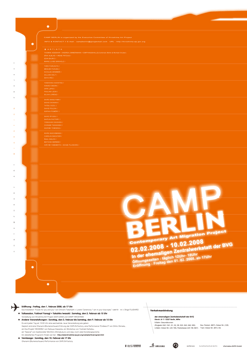 |
|
| Poster (A2) |
|
|
|
|
|
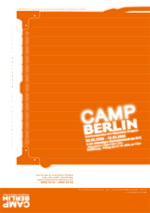 |
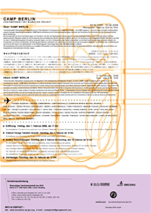 |
|
|
|
|
| Folding Handbill (A3) |
|
|
|
|
|
|
|
|
|
|
|
|
|
|
|
|
|
|
|
|
|
|
|
|
|